Selah, Bamberger Ranch Preserve: Healing "the sorriest piece of land"
Chaperone duty during my kids’ school field trips over the years has taken me to some interesting places. But last Monday it got me in on a private tour of the esteemed Selah, Bamberger Ranch, a privately owned nature preserve of 5,500 acres in the Texas Hill Country near Johnson City.
J. David Bamberger, having made his fortune in vacuum sales and as co-founder of Church’s Chicken, purchased the ranch in 1969 to fulfill a lifelong dream of restoring habitat to “the sorriest piece of land” he could find in the Texas Hill Country. Smothered in water-sucking Ashe junipers (known locally as cedars), lacking any springs, creeks, or ponds, unusable for cattle ranching or farming, the property was dirt cheap and dirt poor. It was just what Bamberger was looking for.
He tried to drill for water but failed to find any. So he started chopping out the thirsty cedar brakes and replacing them with native grasses (back when native grass seed was extremely difficult to find). Other native grasses whose seeds had lain dormant in the soil returned when the junipers were cleared.
And then an amazing thing happened. Water appeared. Dried-up springs and seeps came back to life, and now the headwaters of burbling Miller Creek originate on the ranch.
The grasses (and the accompanying woodland-edge habitat where grass meets forest) introduced an important new habitat for wildlife, especially birds. Bird surveys of the ranch from 30 years ago found fewer than 50 species. Today, according to Selah’s website, 188 species of birds are documented on the ranch, including the bald eagle, golden eagle, and two endangered songbirds, the golden-cheeked warbler and black-capped vireo.
Bamberger maintains the property as a working ranch to cover expenses. But he and the board of directors are building an endowment fund to preserve the ranch in perpetuity as a nature preserve, without commercialization.
One of the rustic ranch buildings
As our group toured the ranch on this warm, late-February morning with executive director Colleen Gardner, I could hardly imagine the property as it once was, arid and thickety with cedars. Water was flowing steadily and had been pooled into numerous small ponds along the hiking trails.
Coppery grasses rattled in the breeze.
Ranch biologist Steve Fulton explained to us how important grasses are to the health of the water supply. They slow down runoff, prevent erosion, and filter water so that it can seep into the soil and recharge the aquifer.
Hiking the nature trails, we enjoyed a bit of late fall color. Even though spring is right around the corner, the ranch still wore the copper and tan hues of autumn.
Split-open seedpods of Mexican buckeye (Ungnadia speciosa)
I was excited to spot the distinctive smooth, mahogany trunks of a Texas madrone (Arbutus xalapensis). When I mentioned to Colleen that I’d never even come across this tree at the Lady Bird Johnson Wildflower Center, which showcases native plants from the Austin area, including the Hill Country, she told me that the Center once collected a madrone from Bamberger Ranch, but it didn’t survive. Update 11/26/11: There are at least two Texas madrones growing at the Wildflower Center near the Erma Lowe Hill Country Stream.
Texas madrone is, it seems, rather finicky and dependent on very localized habitat. For more information about this rare tree, click for an interesting article on Texas madrone by Texas Parks & Wildlife magazine.
While Selah’s purpose is conservation and education, for tax purposes and meeting expenses the preserve is also a working ranch with some cattle. Ranch operations manager Scott Grote and his daughter, Willow, who was on a school holiday herself, gave us a lesson in cowboying.
Willow—the envy, perhaps, of all the young girls on the tour.
Colleen and Easter, one of the ranch dogs. Colleen was trying to distract Easter, who’d been carrying sticks over to us in hopes of a game of fetch.
Texas sotol (Dasylirion texanum)
Selah, Colleen explained, is a biblical term from the Book of Psalms that means “pause and reflect.” J. David Bamberger thought it a fitting name for the conservation work he’d dedicated his life to. Selah, Bamberger Ranch Preserve offers a beautiful place to pause and reflect on the importance of all our efforts in the good stewardship of the earth.
____________
Bamberger Ranch is not open to the public, but tours and workshops are offered, by reservation only, throughout the year. You can follow Bamberger Ranch on Facebook.
All material © 2006-2011 by Pam Penick for Digging. Unauthorized reproduction prohibited.


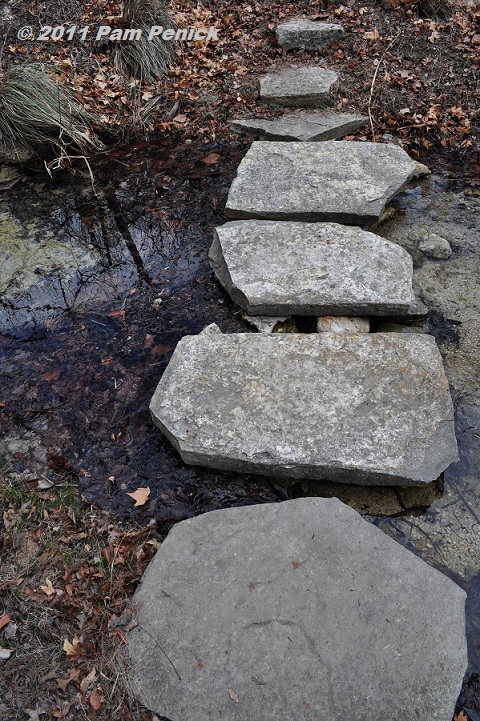
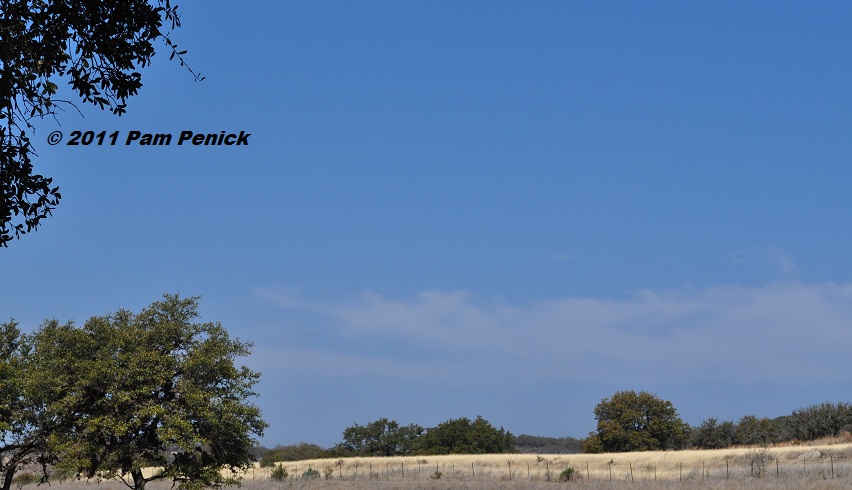
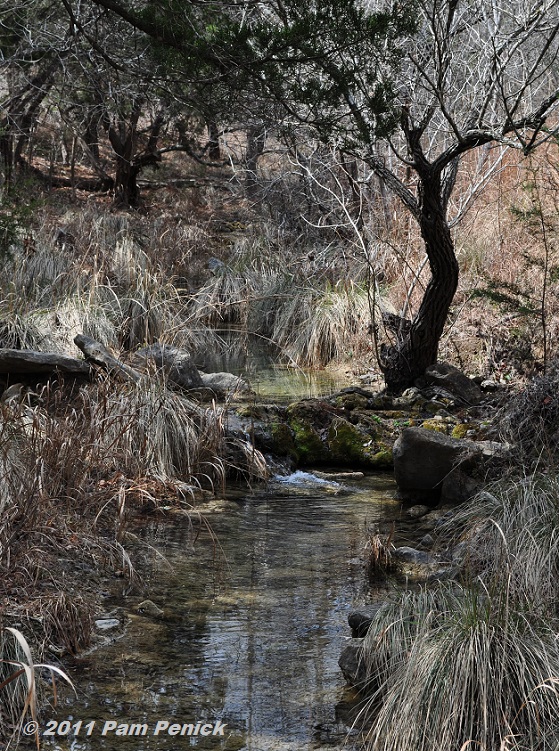
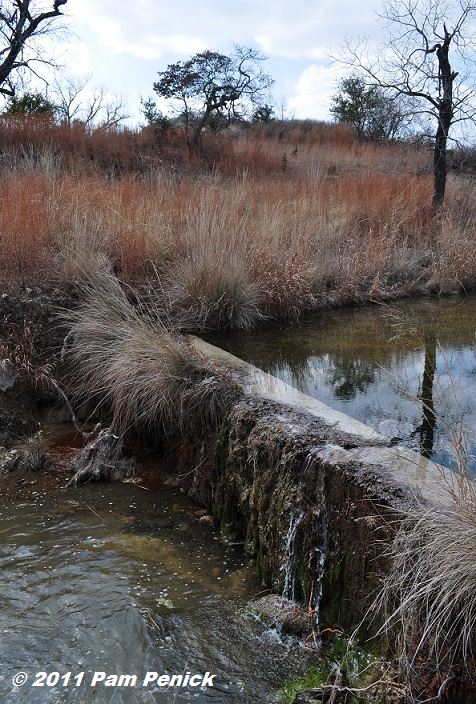
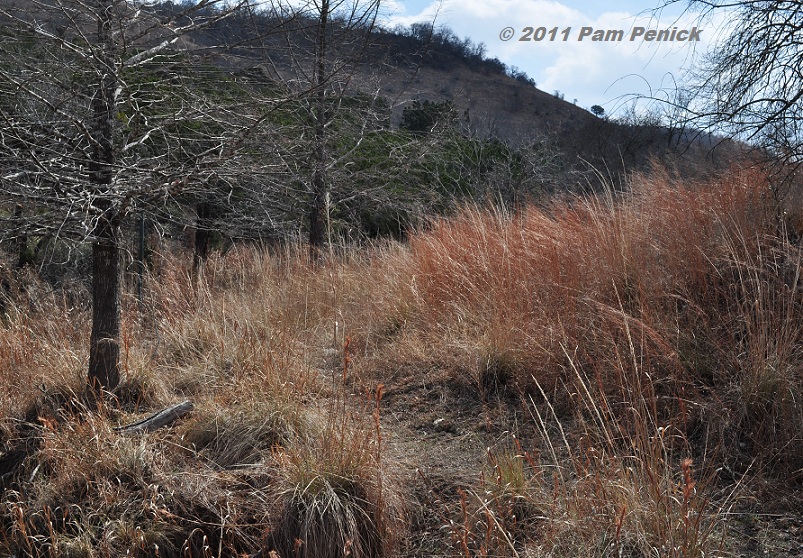
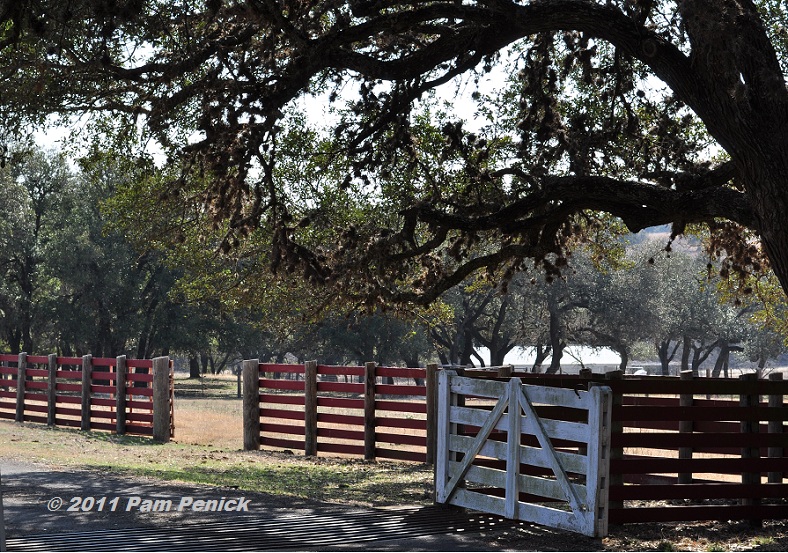
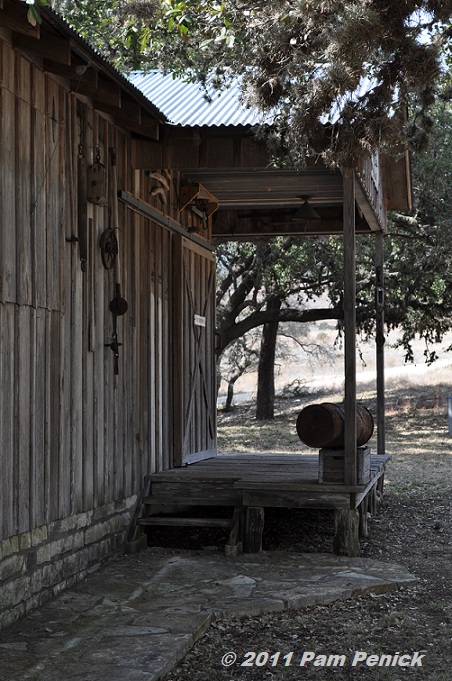
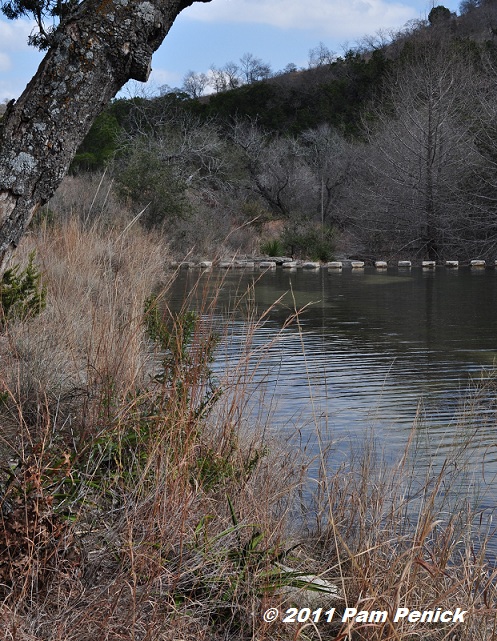
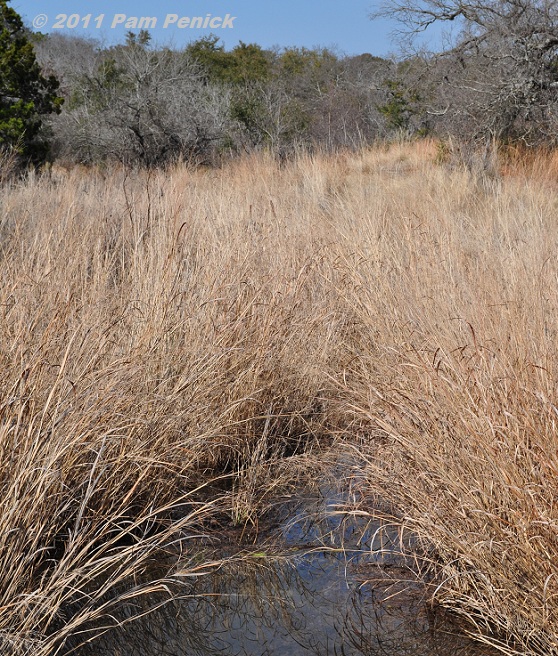
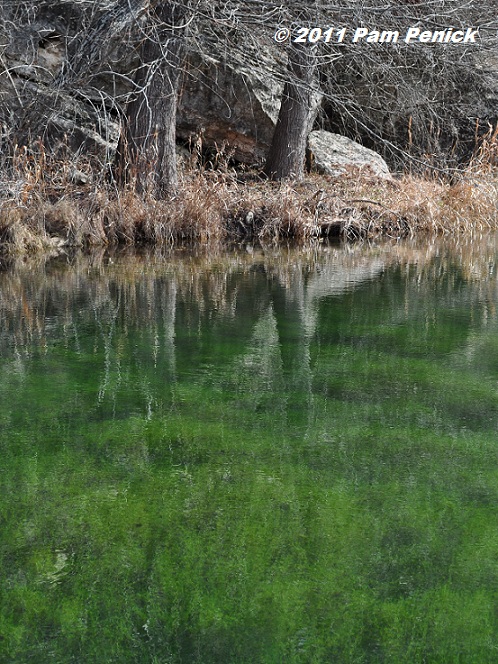
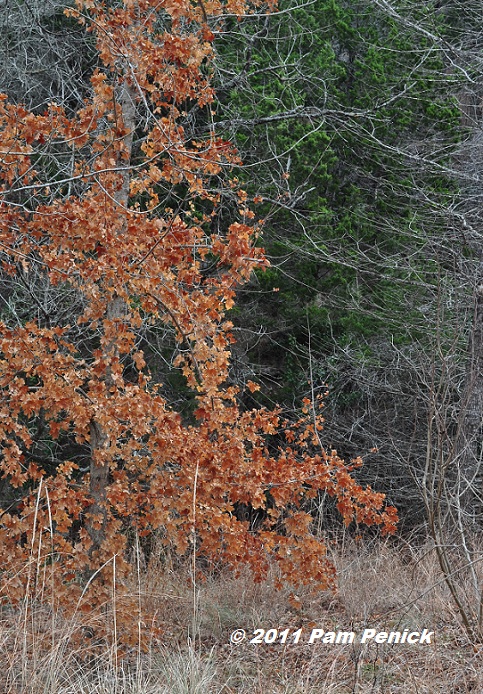
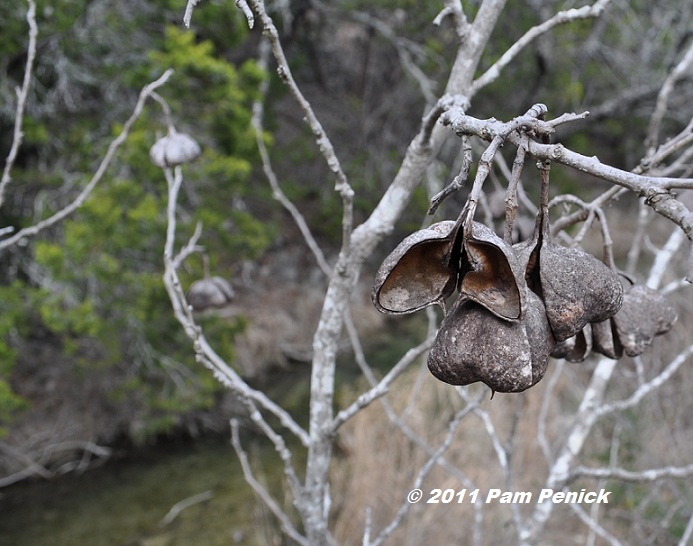
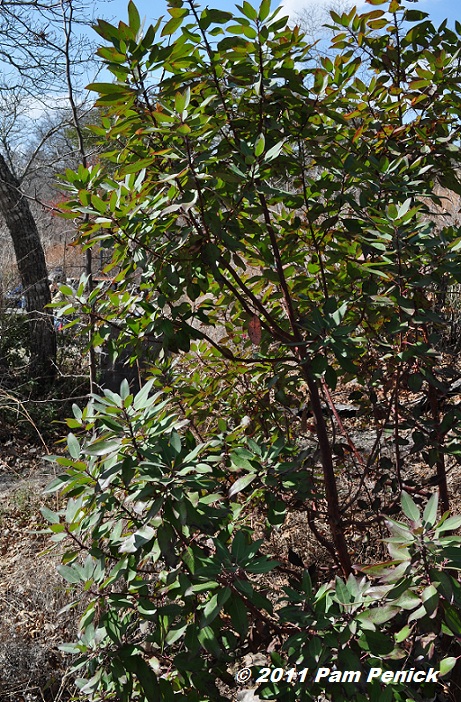
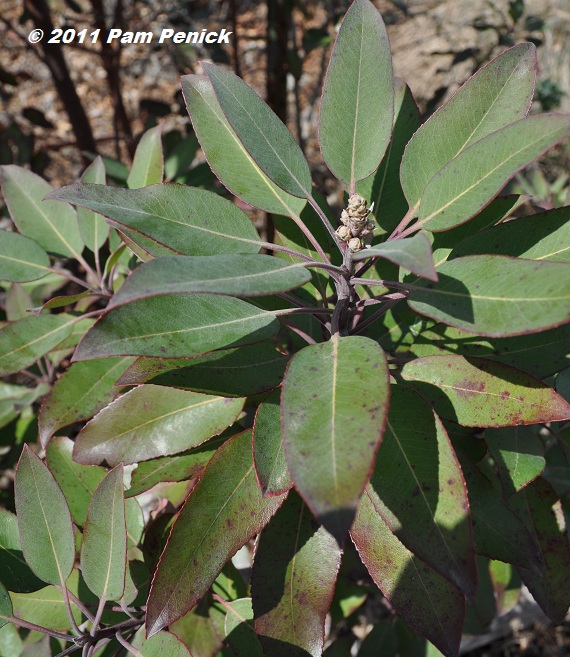
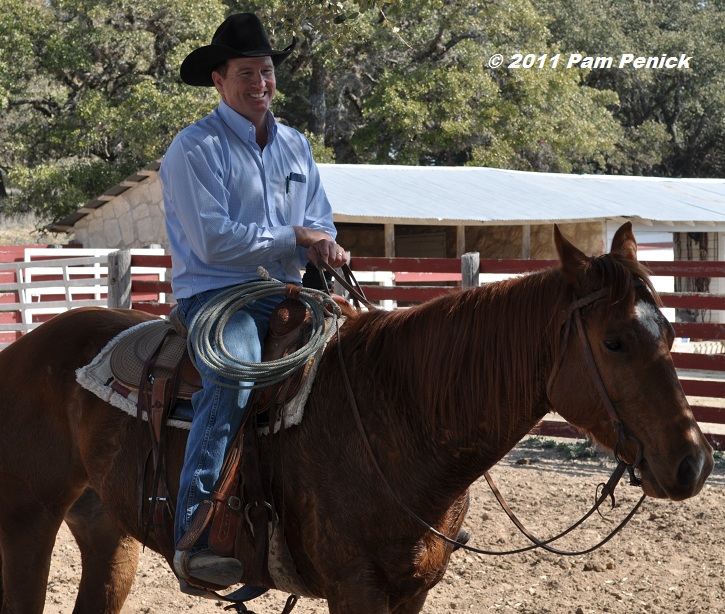
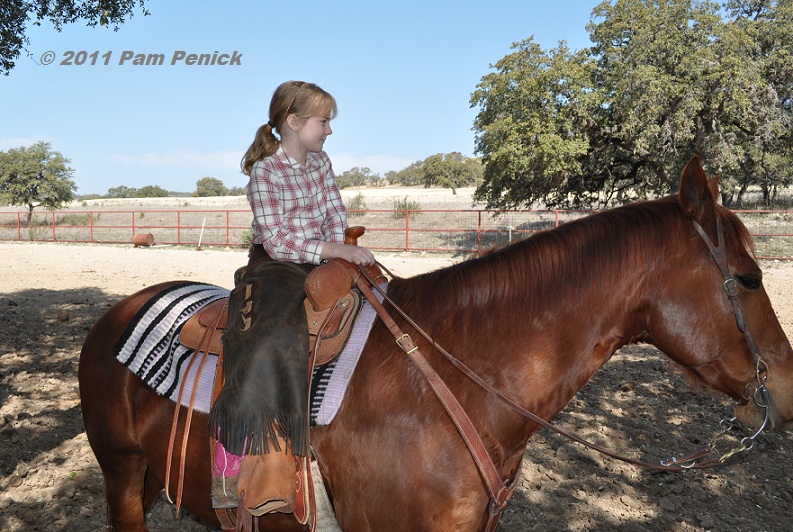
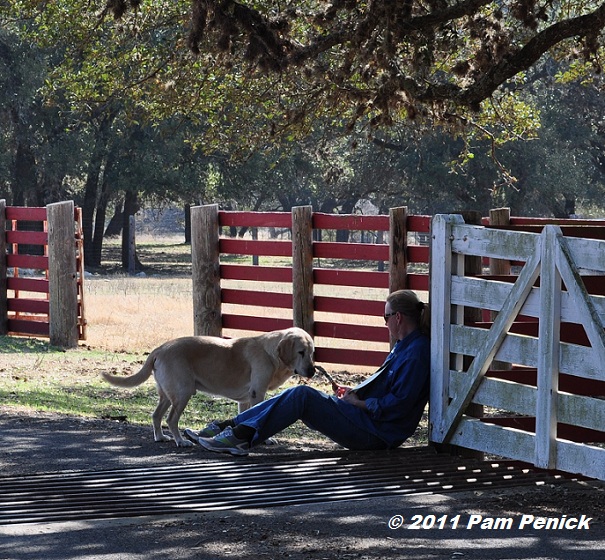
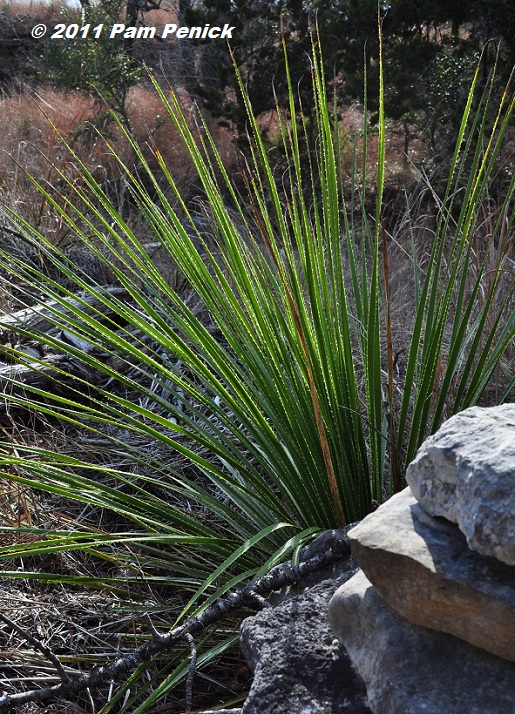
This is a beautiful story, Pam–one that environmentalists can site as a good example of what happens when land is allowed to revert back to its natural state. So amazing that the water returned once that was allowed to happen. Thanks for this great story!
What a wonderful story! I enjoyed reading it. Thank you.
What a great story.
And such great shots illustrating the southern prairies – much further along as to spring, than the northern prairies where I am today! But similar patterns; here it’s Bur Oak, American Elm, etc. Very nice context.
Oh, Im just dying to see this place. I need to arrange a home-schooling tour! Thanks for the reminder. What a jewel.
What an exciting tour. It just goes to show what you can do with good stewardship.
In Australia a man called Peter Andrews has pioneered a similar approach – bringing back the natural waterways and restoring degraded farmland by restoring native vegetation and slowing water run-off. http://www.naturalsequencefarming.com/
these are the amazing stories we hope we can read more of…thx Pam for sharing this inspirational story…
I love hearing these kind of stories about people who have the vision to set aside and restore places like this.
This was fantastic–exactly what I dream to do someday, though probably won’t have 5,000 acres. What inspiration, what a fun ride (wish I had beena horse while reading this post).
A wonderful story! I’m all teary-eyed. :>) This is a story that should be told more often. Thank you for posting this. Sometimes we start to think “nobody cares”… nice to find out that some truely do.
When we moved to our ranch in Driftwood, there had been tons of goats and horses. The front area was beaten down to red clay with nothing growing on it. It has taken 8 years, and now it is flourishing with beautiful grasses and other things…similar to the pictures above (not the buildings), but the grasses and native plants are now amazing. I’m going to search out back to see if I can find a madrone. There is another tree that I have not yet identified that blooms in the spring and is very fragrant…I will attempt to find out what it is. 😉 There is one huge clump of very tall grass that comes up only in one place..I don’t know what it is yet either.
What a fantastic story~and what a marvelous tour.
How interesting to imagine that vast expanse covered in evil cedars. And what a lot of work it took to transform that property – fascinating.
What a great undertaking here…It appears to have been a very beneficial project.
Pam, I’m catching up on your posts so this is a catch-all comment! Congrats on the blogiversary … if I hadn’t found your blog, I’d not have made it to that first meeting of garden bloggers from around the country and my life would be much less interesting! You have a lot of material to share with your listeners at SXSW and I know they’ll be entertained and enriched. I’ve been working more veggies into my gardens so your roundtable and review posts gave me some ideas. I’ve looked down on pittosporum for a while but that picture in your foliage post makes me think I’m wrong to do so. Add Bamberger Ranch to places in Texas I’d love to visit.
OK, that’s all!
Pam, Mr. Bamberger was so ahead of his time, wasn’t he? That was long before LBJ Wildflower Center was even a glimmer of an idea. And knowing the story of this ranch, I’ve often wondered about how beautiful Austin would be if we could get out all of these invasive, non-native Junipers (cedar). No more cedar-fever, and think of the water and huge oaks trees that would be everywhere! When I drive Austin and see the scenic views, I picture how it must have looked 100 years ago; this had to be Eden for travelers across parched, brown, flat Texas and western lands. If I won the lotto, I think I would tackle the project of removing these trashy trees from our environment. Thanks for the great post.
Actually Ashe juniper, despised though it may be, is native to central Texas, as the folks at Bamberger reminded us. See Annie’s comment, below, for a good explanation of how cedar ended up taking over our native grasslands. At Bamberger they take care to leave a certain percentage of cedar brakes (I think it was 30%) in order to provide shelter for animals and necessary habitat for creatures like the endangered golden-cheeked warbler, which depends on the junipers for its survival. —Pam
There have been other articles about this amazing place Pam, but as always – your artist’s eye sees new things to show us. It’s staggering to imagine the amount of labor done to remove the junipers and how hard it is to maintain the balance. I love the simplicity of the buildings and am glad you got to see a madrone… think one of the trails at Wild Basin was called Madrone, but I’m not sure they survived there, either.
From what I’ve read, the Ashe juniper is a Central Texas native, but it’s also opportunistic, expanding to become the dominant tree after wildfires were suppressed and cattle grazed the other vegetation but declined to eat the junipers. Being native doesn’t keep these trees off the Oklahoma invasive species list just like being native doesn’t keep poison ivy off the Federal Noxious Weed list!
Annie at the Transplantable Rose
Just like everyone else, I think the water story is fantastic. Thanks so much for sharing this wonderful place with us.
Thanks for this post. I got to spend a weekend there at a Sierra Club Workshop many years ago. I’ve been wishing I could go back and see the ongoing changes as well as his bat cave. But this was a wonderful little glimpse of his property.
Thanks for an inspiring visit. If anyone is in doubt about the value of preservation and restoration of habitat, this is pure proof.